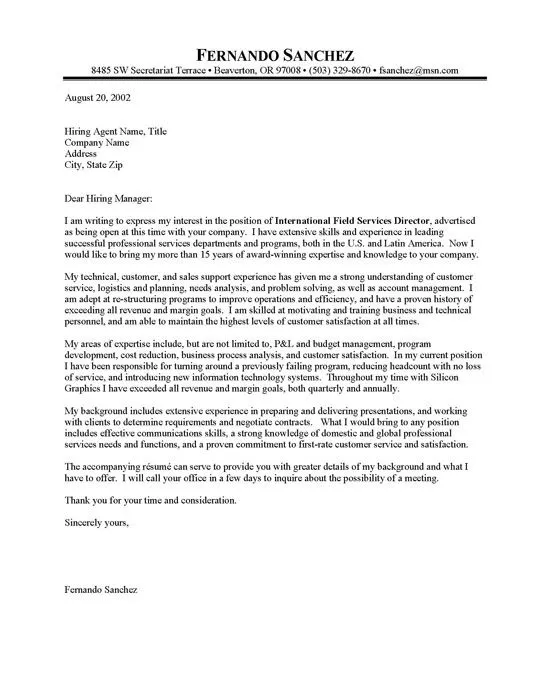Understanding the Importance of a Nonprofit Cover Letter
A well-crafted cover letter is crucial when applying for a position within a nonprofit organization. It serves as your initial introduction and allows you to showcase your passion for the cause, highlight relevant skills, and demonstrate your understanding of the organization’s mission. Unlike a resume, which provides a factual overview of your experience, a cover letter gives you the opportunity to tell your story, explaining why you’re the ideal candidate and what motivates you to contribute to their work. In the competitive nonprofit sector, a compelling cover letter can significantly increase your chances of securing an interview. It’s your chance to make a positive first impression and distinguish yourself from other applicants.
What to Include in Your Nonprofit Cover Letter
Your nonprofit cover letter should be meticulously crafted to effectively communicate your qualifications and enthusiasm. It should be professional, concise, and tailored to the specific organization and position. The following sections are essential for a comprehensive and impactful cover letter. By including all the necessary elements, you create a compelling narrative that effectively positions you as a strong candidate for the role. Always remember to adapt these sections to align with the requirements outlined in the job description to showcase the relevant experience and skills.
Contact Information and Date
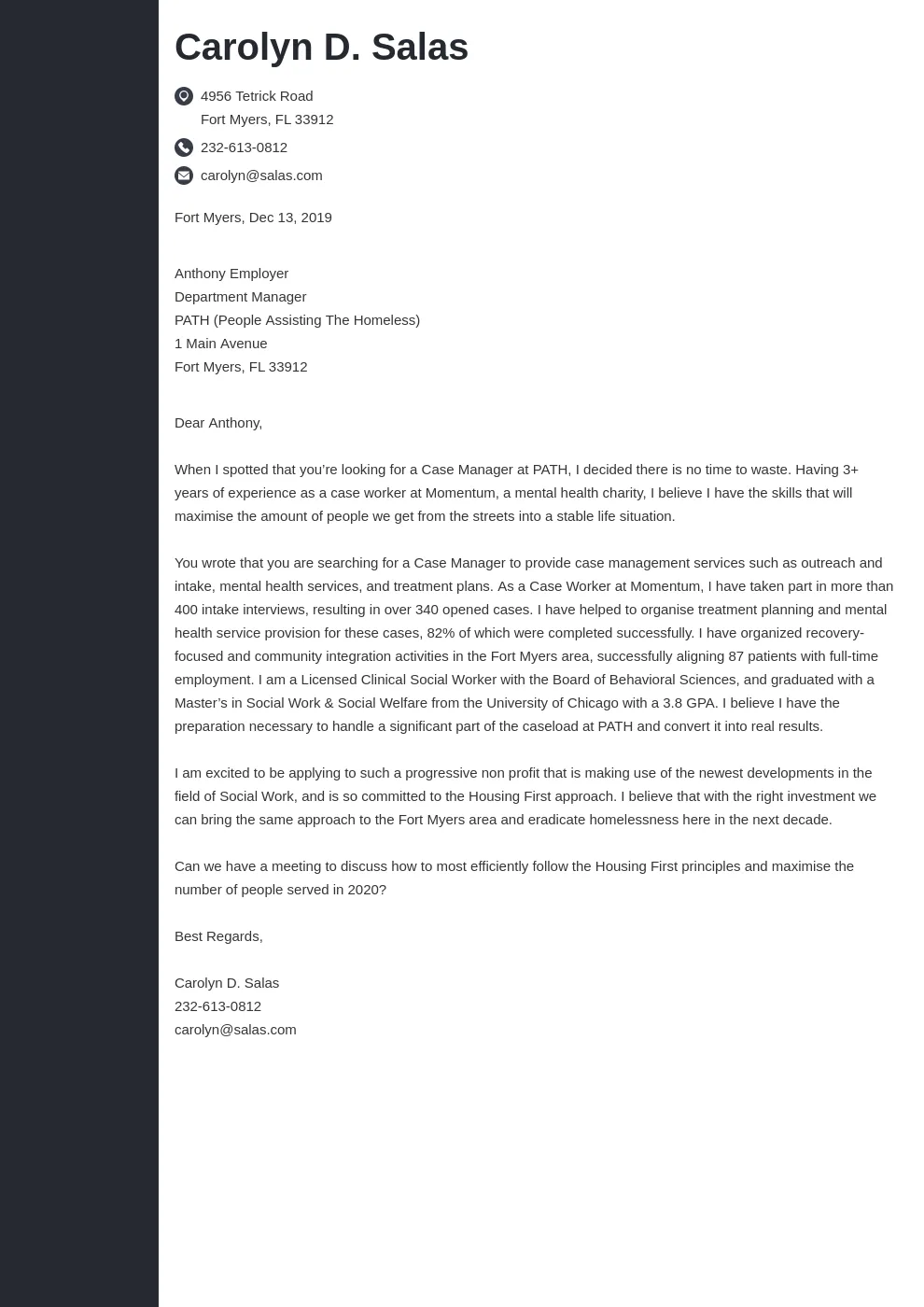
Start with your contact information, including your name, phone number, email address, and possibly your LinkedIn profile URL. Then, include the date you are sending the cover letter. This section ensures the recipient knows how to reach you and indicates when the letter was written. Presenting your contact details clearly establishes your professionalism and provides the hiring manager with immediate access to your information. This basic setup is the cornerstone of a well-formatted cover letter, setting the tone for the rest of the document and making it easy for the reader to connect with you.
Recipient’s Information
Address the letter to a specific person if possible. Research the organization to find the hiring manager’s name or the person in charge of reviewing applications. Using a name shows that you have taken the initiative to learn about the organization and demonstrates respect. If you cannot find a specific name, use a professional title like “Hiring Manager.” Avoid generic greetings. Addressing your letter directly to the hiring manager or the relevant contact person can make your application stand out and create a personal connection. Ensure the recipient’s name and title are accurate to show attention to detail.
Salutation
Start with a professional salutation such as “Dear Mr./Ms./Mx. [Last Name]” or “Dear Hiring Manager.” Avoid overly casual greetings. The salutation sets the tone for the entire letter, so it should be formal and respectful. Use the recipient’s name if you have it, as this makes the letter more personal and shows that you’ve done your research. If you are unsure of the name, a more generic, yet professional greeting is acceptable. Maintain a formal tone throughout your cover letter to align with the professional standards of the nonprofit sector.
Highlighting Your Passion and Fit
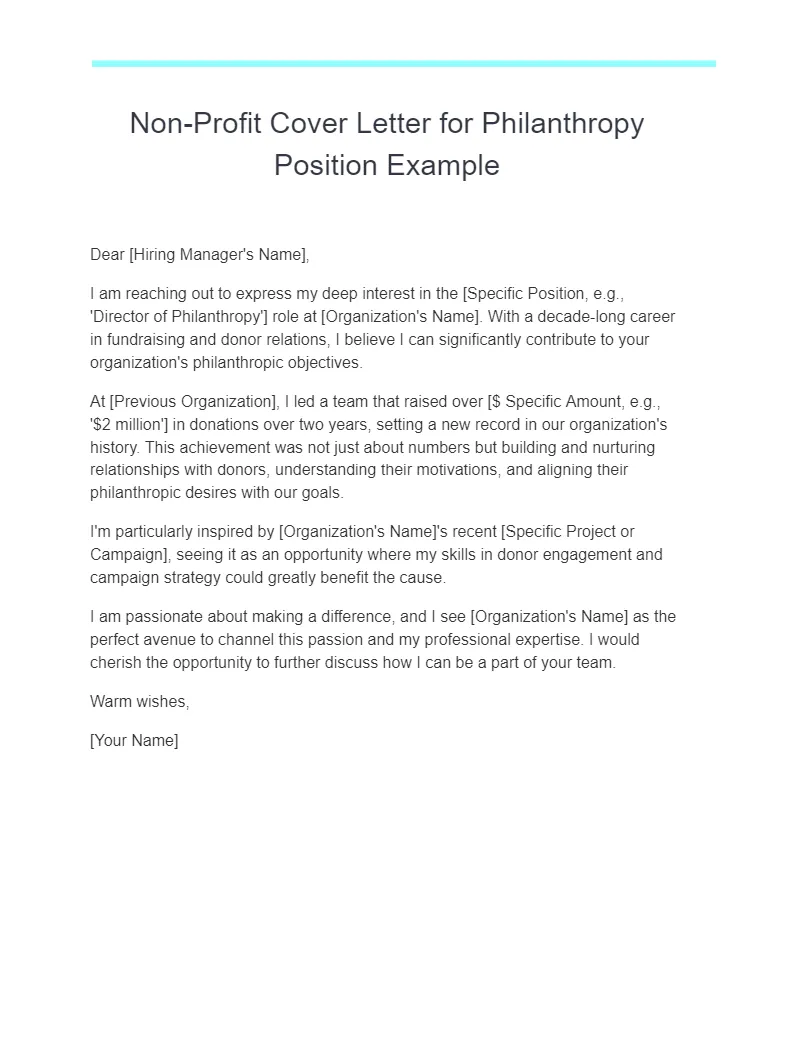
In the opening paragraph, express your enthusiasm for the nonprofit’s mission and explain why you are interested in the specific position. Clearly state your passion for the cause and connect your personal values with the organization’s goals. This section is where you can express what attracts you to the organization, such as your belief in their work and your desire to contribute. Show your understanding of their work by relating your skills and experiences to their mission, highlighting what makes you the perfect candidate to join the team. Your passion should be obvious from the first sentence, and you should strive to explain what makes you a great fit for the culture.
Showcasing Your Skills and Experience
In the body of your letter, detail your relevant skills and experience. Use specific examples to demonstrate how you have successfully performed tasks or achieved results in previous roles. Refer to the job description to identify the key skills and qualifications the nonprofit is seeking, and then illustrate how your experiences align with these requirements. Include examples of projects, volunteer work, or previous jobs where you’ve used the skills they are seeking. Focus on transferable skills such as communication, teamwork, leadership, and problem-solving. This demonstrates your capacity to deliver value, supporting the nonprofit’s mission with concrete examples of past achievements, and gives the recruiter a better idea of your qualifications and capabilities.
Quantifying Your Accomplishments
Whenever possible, quantify your accomplishments using numbers and data. For instance, instead of saying “Managed social media,” say “Increased social media engagement by 30% in six months.” Quantifying your achievements provides concrete evidence of your capabilities and the impact you have made in previous roles. Use metrics to demonstrate the value you brought to past projects and showcase your abilities. Numbers give the reader a clear understanding of your past successes and your potential impact on their organization. Adding data and statistics will greatly improve the impact of your cover letter.
Expressing Your Understanding of the Nonprofit’s Mission
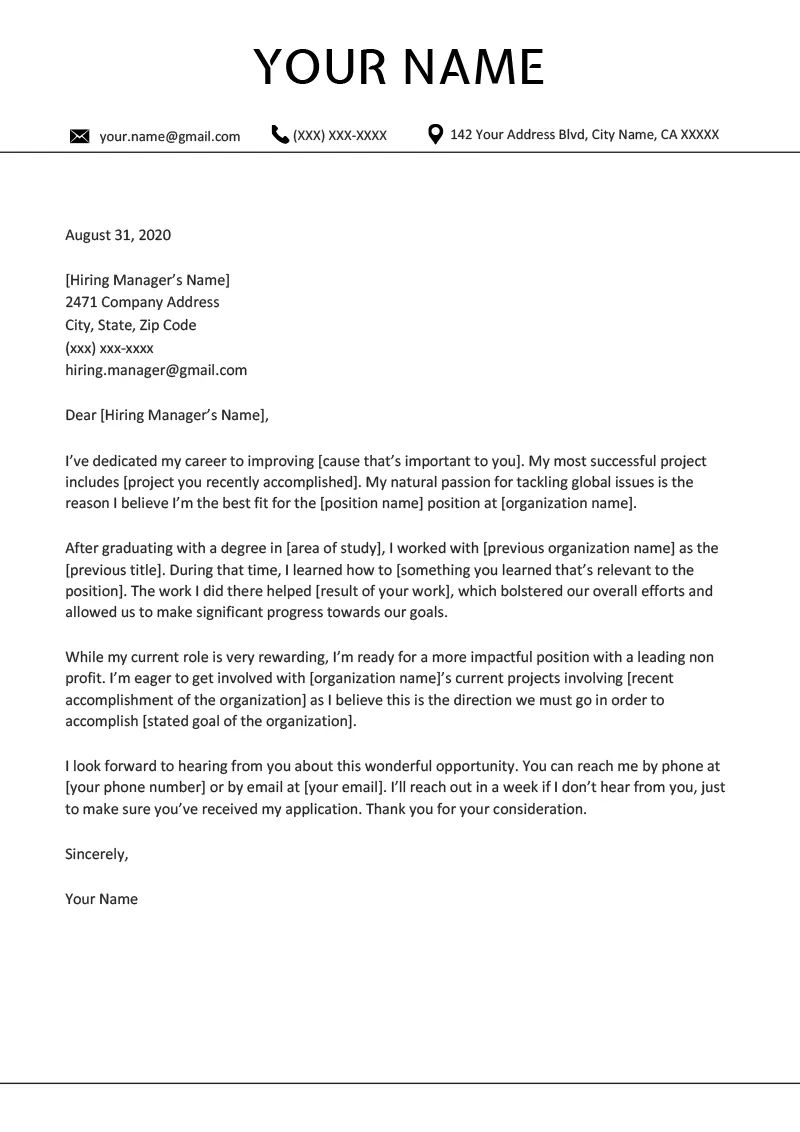
Demonstrate your understanding of the nonprofit’s mission by explaining how your values align with their goals. Show that you have researched the organization and are familiar with their programs and initiatives. Explain what specifically appeals to you about their work and how you see yourself contributing to their success. Referring to specific projects or goals that the nonprofit is pursuing shows that you are engaged and interested in their work. Demonstrating that you understand and support their mission enhances your application and increases your chances of getting an interview.
Call to Action and Closing
In your closing paragraph, reiterate your interest in the position and the organization. Include a call to action, such as expressing your availability for an interview and thanking the reader for their time and consideration. Your call to action must be clear and concise, indicating your strong interest in taking the next step. Offer your contact information again if necessary. A strong closing statement will leave a lasting, positive impression on the reader, increasing your chances of getting an interview. Express your enthusiasm and gratitude, and sign the letter professionally.
Formatting and Design Tips for Your Cover Letter
Proper formatting and design are essential for creating a professional and readable cover letter. A well-formatted letter is easy to read and makes a positive impression on the hiring manager. The layout should be clean and uncluttered, allowing the reader to quickly grasp the key information. Ensure your cover letter is organized and visually appealing. Proper formatting enhances readability and demonstrates attention to detail. Here are some design tips to follow.
Choosing the Right Font and Font Size
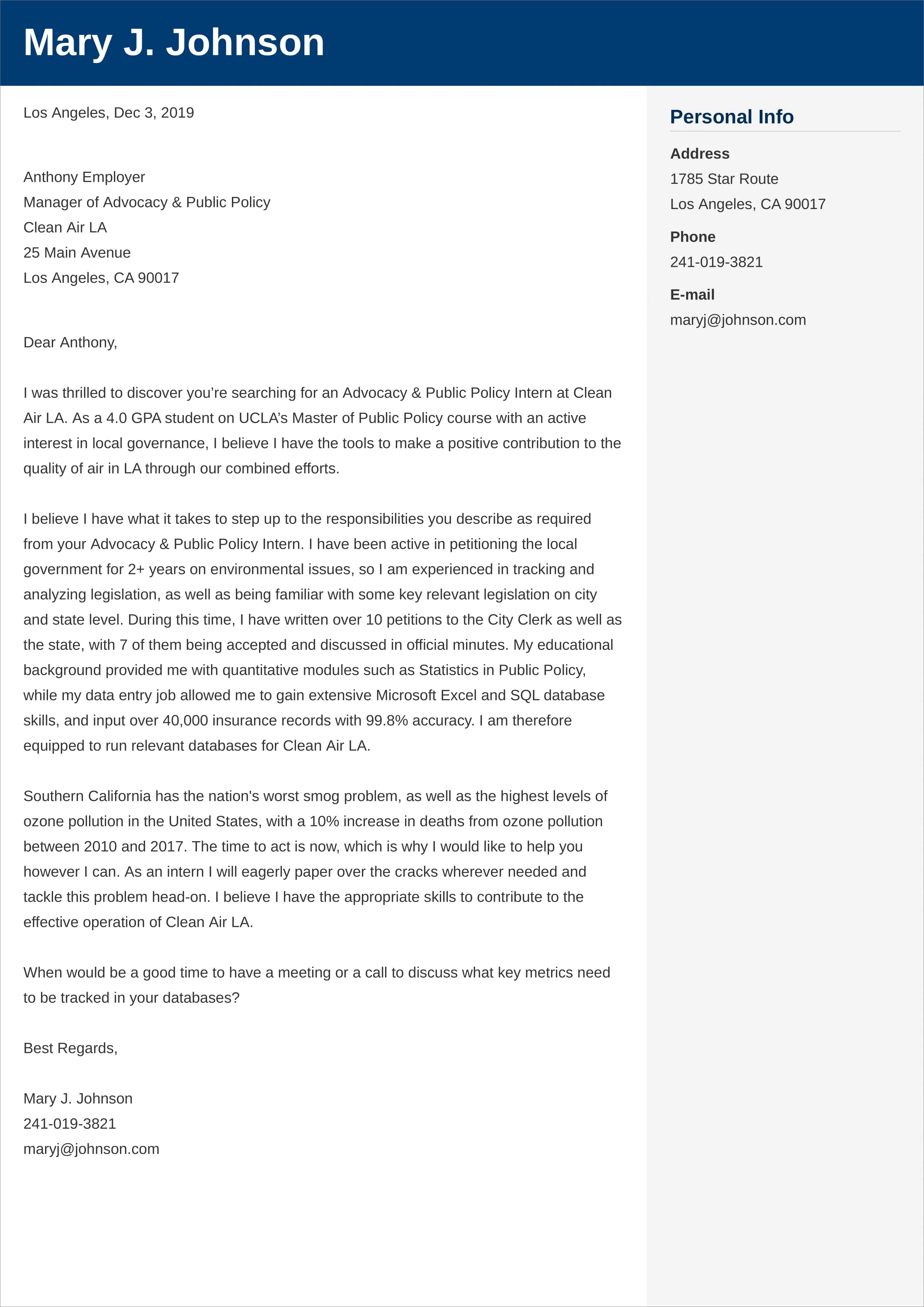
Select a professional and easy-to-read font, such as Times New Roman, Arial, or Calibri. Keep the font size between 10 and 12 points. A readable font and size make the letter inviting to the reader. Avoid using overly decorative fonts or sizes that are too small or too large, as these can be distracting and unprofessional. Ensure your font choice aligns with the overall professional tone you are trying to achieve in your cover letter.
Maintaining Proper Spacing and Margins
Use single spacing within paragraphs and double spacing between paragraphs. Set standard 1-inch margins on all sides of the page. Correct spacing makes the document visually appealing. Consistent spacing and margins create a neat and organized layout. Proper spacing improves the readability of your cover letter and ensures that all information is easily accessible to the reader, creating a professional and clean presentation. This will make your letter more approachable and less overwhelming for the reader.
Proofreading and Editing Your Cover Letter
Thoroughly proofread and edit your cover letter for any grammatical errors, typos, or inconsistencies. A polished document is a sign of professionalism. Poorly written letters suggest a lack of attention to detail. Always check for any mistakes in grammar, spelling, and punctuation. Consider having a friend or family member review your cover letter to catch any errors you may have missed. Proofreading ensures that your message is clear and professional. Careful proofreading is an essential step in creating a strong and effective cover letter, demonstrating your dedication to precision and quality.
Common Mistakes to Avoid in Nonprofit Cover Letters
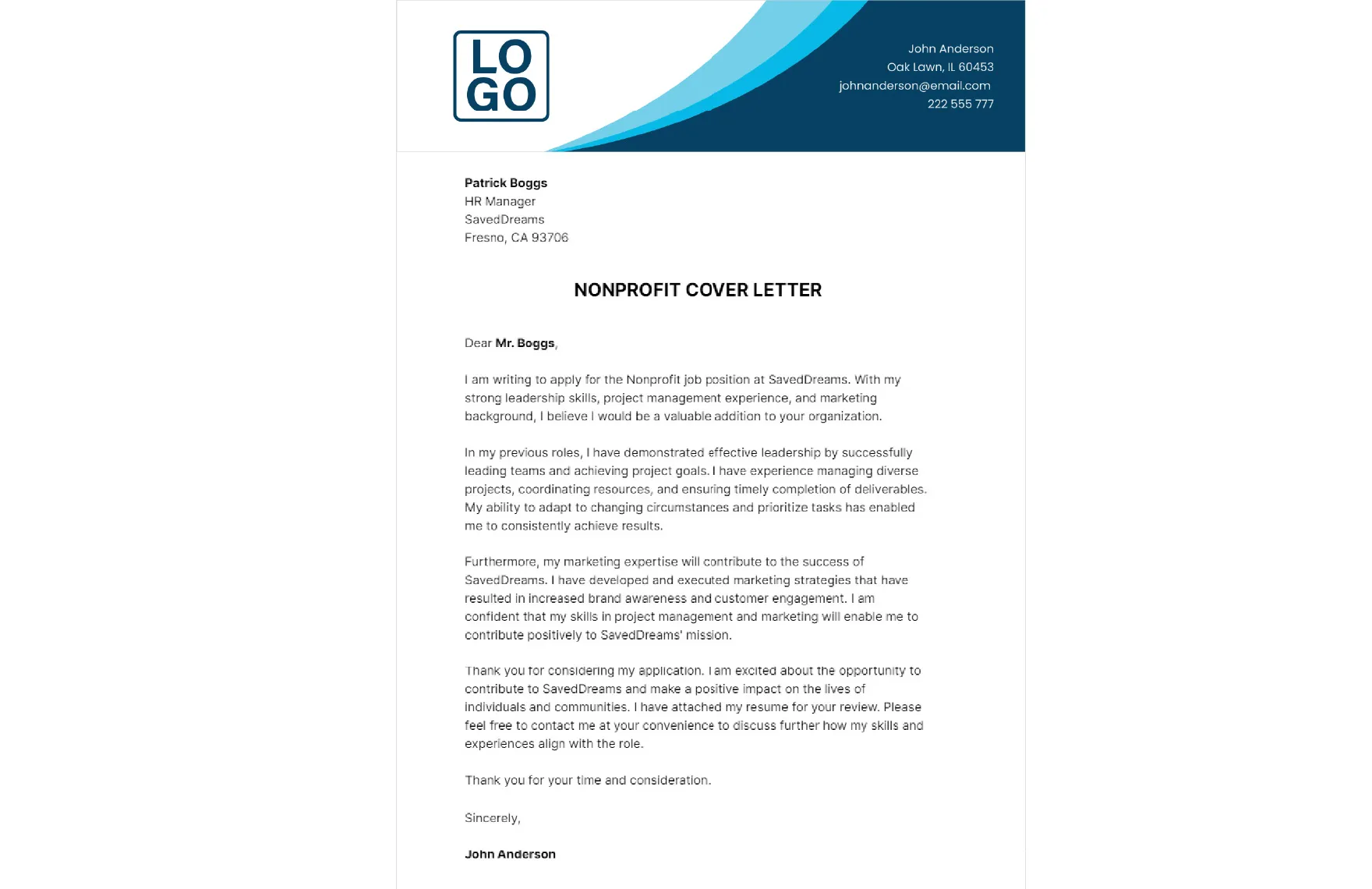
Avoid common mistakes that can undermine your application and reduce your chances of getting an interview. These mistakes can quickly turn a hiring manager against your application. Being aware of these common pitfalls allows you to craft a cover letter that is effective and professional. By avoiding these common errors, you can ensure your cover letter stands out for the right reasons. Be sure to review your cover letter carefully to avoid these frequently made errors.
Generic Cover Letters
Avoid using a generic cover letter that is not tailored to the specific position or organization. Generic letters lack the personalization and detail needed to impress the hiring manager. Generic letters show a lack of effort and an absence of genuine interest in the position. Every cover letter should be unique, highlighting how your skills and experience match the requirements of the specific job and the mission of the organization. Customize each cover letter to demonstrate your understanding of the role and the nonprofit’s work.
Focusing Solely on Yourself
While it’s important to highlight your skills and experiences, don’t focus solely on yourself. Balance your achievements with how you can contribute to the nonprofit’s mission. Always emphasize how your skills and experiences will benefit the organization. Ensure that you demonstrate how you can contribute to the nonprofit and its cause. Explain how your contributions will help them achieve their goals. Demonstrate your understanding of the organization’s mission and how your skills can support their objectives.
Typos and Grammatical Errors

Typos and grammatical errors can create a negative impression and undermine your credibility. Always proofread your cover letter carefully. Errors make the letter look unprofessional, demonstrating a lack of attention to detail. Carefully review your cover letter for spelling mistakes, punctuation errors, and grammatical inaccuracies. Use spell check and grammar check tools, and consider having someone else review your letter for a second opinion. Ensure your letter is error-free to maintain a professional image.
Not Tailoring Your Letter to the Specific Organization
Failing to tailor your cover letter to the specific nonprofit organization is a major mistake. Generic letters do not demonstrate your interest in the specific organization. Your letter should reflect research and understanding of the organization’s mission, programs, and values. Tailor your cover letter to demonstrate a genuine interest. Research the organization, understand its mission, and highlight the specific aspects that resonate with you. Customize your letter to the organization and the specific role for which you are applying. Be sure to address the qualifications listed in the job description.
Examples of Effective Nonprofit Cover Letter Sections
To make it easier, here are some examples of how to write different sections of your cover letter. Using these examples will guide you in crafting your cover letter, including the opening, middle, and closing sections. Adapt these examples to your experience and the requirements of the job. These examples provide clear guidance on how to write different sections of your cover letter.
Opening Paragraph Examples
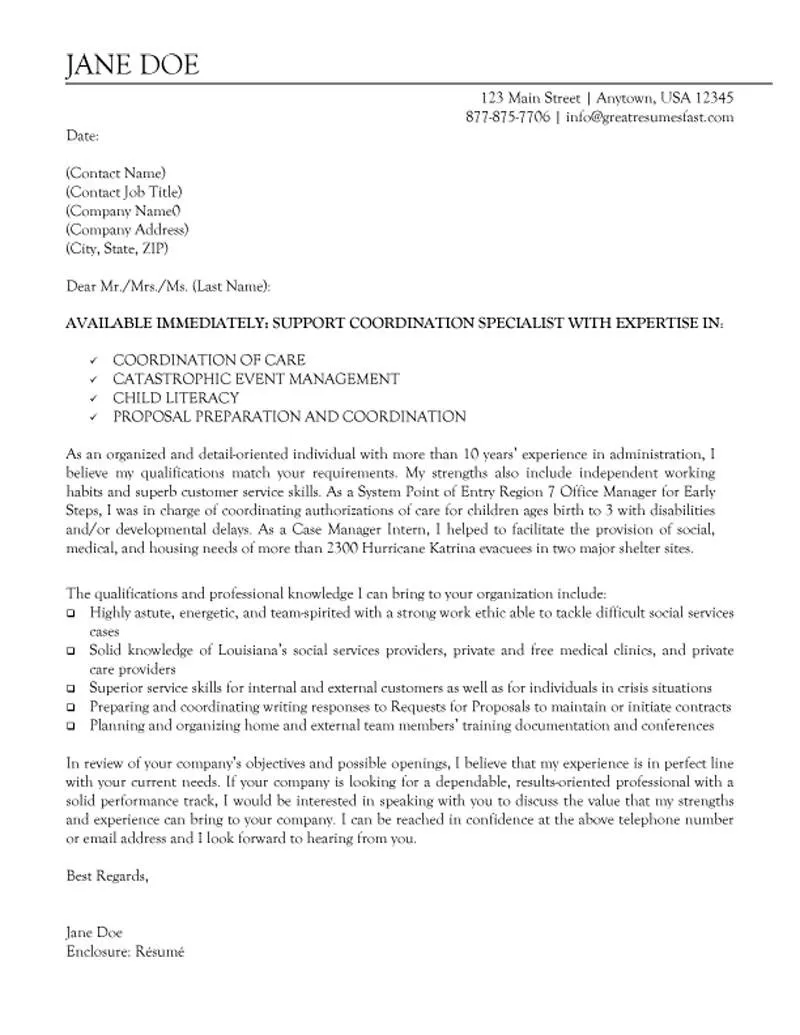
Example 1: “I am writing to express my enthusiastic interest in the [Job Title] position at [Nonprofit Name], as advertised on [Platform]. As a long-time supporter of [Cause] and a dedicated professional with [Number] years of experience in [Relevant Field], I am confident that my skills and passion align perfectly with your mission.”
Example 2: “Having followed [Nonprofit Name]’s impactful work in [Area] for several years, I was thrilled to see the opening for a [Job Title]. Your organization’s commitment to [Mission] strongly resonates with my values, and I am eager to contribute my skills in [Skill 1] and [Skill 2] to support your efforts.”
Middle Paragraph Examples
Example 1: “In my previous role at [Previous Organization], I successfully managed [Project], resulting in a [Quantifiable Result]. My experience in [Relevant Skill] directly aligns with the requirements of this position, and I am confident in my ability to quickly contribute to your team.”
Example 2: “My volunteer work with [Organization] has provided me with extensive experience in [Relevant Skill], including [Task]. This has allowed me to grow my knowledge of [Skill 1] and [Skill 2], which will be invaluable in the [Job Title] role. I was recognized for [Achievement].”
Closing Paragraph Examples
Example 1: “I am excited about the opportunity to discuss how my skills and passion can contribute to [Nonprofit Name]’s mission. Thank you for considering my application. I look forward to hearing from you soon.”
Example 2: “I am eager to learn more about the [Job Title] position and [Nonprofit Name]’s ongoing efforts in [Area]. I am available for an interview at your earliest convenience and can be reached at [Phone Number] or [Email Address]. Thank you for your time and consideration.”
